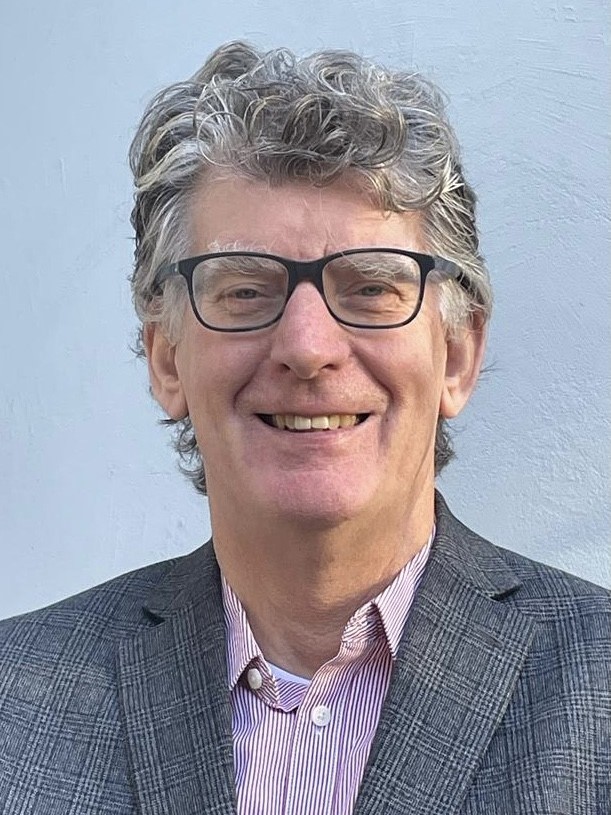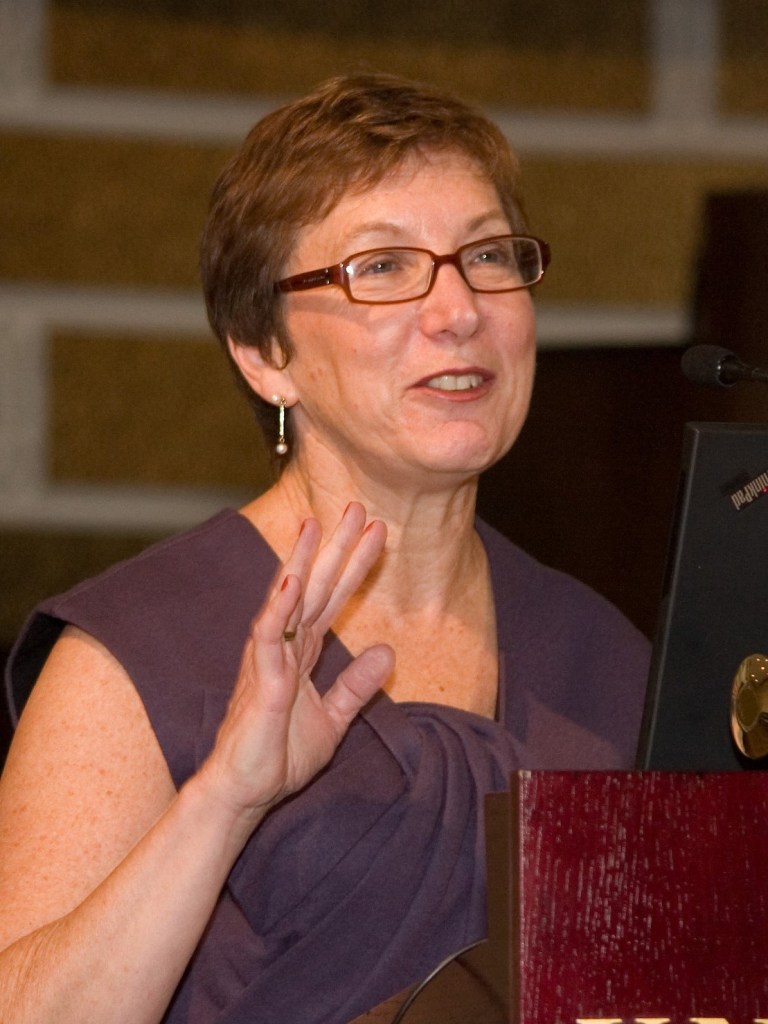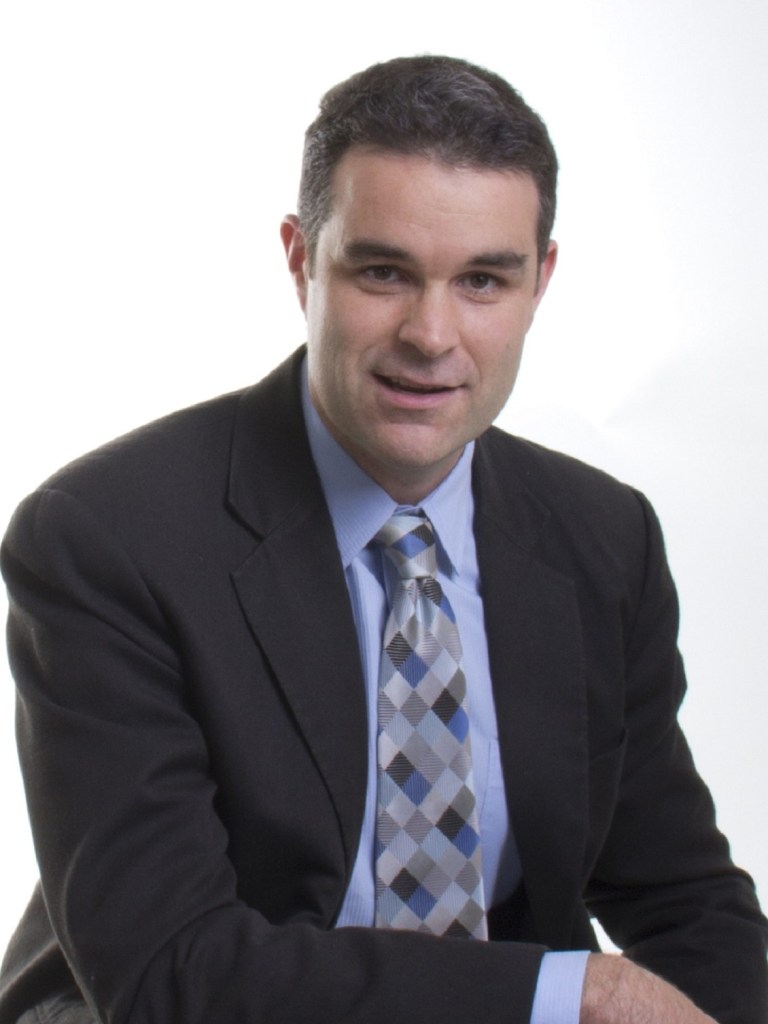Hello everyone, and welcome to the World of Higher Education podcast. I’m Tiffany MacLennan, and if you’re a faithful listener, you know what it means when I’m the one opening the episode—this week, our guest is AU.
We’re doing a year in review, looking at some of the global higher education stories that stood out in 2024—from massification to private higher education, from Trump’s international impact to the most interesting stories overall. But I’ll pass it over to Alex.
The World of Higher Education Podcast
Episode 3.35 | The Year the Money Ran Out: Global Higher Ed Review
Transcript
Tiffany MacLennan (TM): Alex, you’re usually the one asking the questions, but today you’re in our hot seat.
Alex Usher (AU): It’s technically the same seat I’m always in.
TM: Fair point. But today, you’re in the question seat. Let’s start with the global elephant in the room.
Last week, we talked at length with Brendan Cantwell about the domestic effects of Donald Trump’s education policies. But what impacts are we seeing internationally? Are any countries or institutions actively trying to capitalize on the chaos in the U.S.? And if so, how serious are those efforts to poach talent and build their reputations?
AU: There are lots of countries that think they’re in a position to capitalize on it—but almost none of them are serious.
The question is: where is the real destruction happening in the United States? Where is the greatest danger? And the answer is in research funding. NIH funding is going to be down by a third next year. NSF funding is going to be down by more than 50%. So it’s the scientists working in STEM and health—those with the best labs in the world—who are suddenly without money to run programs.
But what are they supposed to do? Are there alternatives to labs of that scale? Are there alternatives to the perks of being a top STEM or health researcher at an American university?
Places like Ireland—well, Ireland has no research culture to speak of. The idea that Ireland is going to step in and be competitive? Or the Czech Republic? Or India, which keeps talking about this being their moment? Come on. Be serious. That’s not what’s happening here.
There might be an exodus—but it’s more likely to be to industry than to other countries. It’s not clear to me that there will be a global redistribution of this talent.
Now, the one group that might move abroad? Social scientists and humanities scholars. And you’ve already seen that happening—especially here in Toronto. The University of Toronto has picked up three or four high-profile American scholars just in the last little while.
Why? Because you don’t need to build them labs. The American lead in research came from the enormous amounts of money spent on infrastructure: research hospitals, labs—facilities that were world-class, even in unlikely places. Birmingham, Alabama, for example, has 25 square blocks of cutting-edge health research infrastructure. How? Because America spent money on research like no one else.
But they’re not doing that anymore. So I think a lot of that scientific talent just… disappears. It’s lost to academia, and it’s not coming back. And over the long term, that’s a real problem for the global economy.
TM: Sticking with the American theme, are there other countries that have been taking, well, I hesitate to say lessons, but have been adopting policies inspired by the U.S. since Donald Trump came to power? Or has it gone the other way—more like a cautionary tale of what not to do if you want to strengthen your education sector?
AU: I think the arrival of MAGA really made a lot of people around the world realize that, actually, having talented researchers in charge of things isn’t such a bad idea.
We saw that reflected in elections—in Canada, in Australia—where center-left governments that were thought to be in trouble suddenly pulled off wins. Same thing in Romania.
The one exception seems to be Poland. But even there, I’m not sure the culture war side of things was ever as intense as it was in the United States. In fact, the U.S. isn’t even the originator of a lot of this stuff—it’s Hungary. Viktor Orbán’s government is the model. The Project 2025 crew in the U.S. has made it pretty clear: they want American universities to look more like Hungarian ones.
And the Hungarian Minister of Higher Education has been holding press conferences around the world, claiming that everyone’s looking at Hungary as a model.
So, there’s definitely been a shift—America is moving closer to the Hungarian approach. But I don’t think anyone else is following them. Even in Poland, where there’s been political change, the opposition still controls the parliament, so it’s not clear anything dramatic will happen there either.
So no—I don’t think we’re seeing widespread imitation of U.S. education policy right now. Doesn’t mean it couldn’t happen—but we’re not there yet.
TM: One thing we’ve seen a lot of this year is talk—and action—around the massification of higher education. What countries do you think have made some of the most interesting moves in expanding access? And on the flip side, are there any countries that are hitting their capacity?
AU: Everyone who’s making progress is also hitting their capacity. That’s the key thing. Massification isn’t just a matter of saying, “Hey, let’s build a new school here or there.” Usually, you’re playing catch-up with demand.
The really interesting case for me is Uzbekistan. Over the past decade, the number of students has increased fivefold—going from about 200,000 to over a million. I’m not sure any country in the world has moved that fast before. That growth is driven by a booming population, rising wealth, and—crucially—a government that’s willing to try a wide range of strategies: working with domestic public institutions, domestic private institutions, international partners—whatever works. It’s very much a “throw spaghetti at the wall and see what sticks” approach.
Dubai is another case. It’s up 30% this year, largely driven by international students. That’s a different kind of massification, but still significant.
Then there’s Africa, where we’re seeing a lot of countries running into capacity issues. They’ve promised access to education, but they’re struggling to deliver. Nigeria is a standout—it opened 200 new universities this year. Egypt is another big one. And we’re starting to see it in Kenya, Tanzania, Ghana—places that have reached the level of economic development where demand for higher education takes off.
But here’s the catch: it’s not always clear that universal access is a good idea from a public policy standpoint. At certain stages of economic development, you can support 70% participation rates. At others, you’re doing well to sustain 20%. It really depends where you are.
And these are often countries with weak tax systems—low public revenue. So how do you fund it all? That’s a major challenge.
What we’re seeing in many places is governments making big promises around massification—and now struggling to keep them. I think that tension—between rising demand and limited capacity—is going to be a major story in higher education for at least the next three or four years.
TM: I think that leads nicely into my next question: what’s the role of private higher education in all of this?
Private institutions have been popping up more and more, and the conversation around them has only grown. Sometimes they’re filling important gaps, and sometimes they’re creating problems. But this year, we also saw some pretty major regulatory moves—governments trying to reassert control over what’s become a booming sector.
Do you see this as part of a broader shift? And what do you think it means for the future of private higher education?
AU: I don’t see a big shift in private education in less industrialized countries. What you’re seeing there is more a case of the public sector being exhausted—it simply can’t keep up with demand. So private providers show up to fill the gap.
The question is whether governments are regulating those providers in a way that ensures they contribute meaningfully to the economy, or if they’re just allowing bottom-feeders to flourish. And a lot of places struggle to get that balance right.
That said, there are some positive examples. Malaysia, for instance, has done a pretty good job over the years of managing its private higher education sector. It’s a model that other countries could learn from.
But I think the really interesting development is the growth of private higher education in Europe.
Look at Spain—tuition is relatively cheap, yet 25% of the system is now private. France has free tuition, but still, 25% of its system is private. In Germany, where tuition is also free, the private share is approaching 20%.
It’s a different kind of issue. Strong public systems can ossify—they stop adapting, stop responding to new needs. In Europe, there’s very little pressure on public universities to align with labor market demand. And rising labor costs can mean that public universities can’t actually serve as many students as they’d like.
France is a good example. It’s one of the few countries in Europe where student numbers are still growing significantly. But the government isn’t giving public universities more money to serve those students. So students leave—they say, “This isn’t a quality education,” and they go elsewhere. Often, that means going to private institutions.
We had a guest on the show at one point who offered a really interesting perspective on what private higher education can bring to the table. And I think that’s the fascinating part: you’d expect the private sector boom to be happening in a place like the U.S., with its freewheeling market. But it’s not. The big story right now is in Europe.
TM: Are there any countries that are doing private higher education particularly well right now? What would you say is the “good” private higher ed story of the year?
AU: That’s a tough one, because these things take years to really play out. But I’d say France and Germany might be success stories. They’ve managed to keep their top-tier public institutions intact while still allowing space for experimentation in the private sector.
There are probably some good stories in Asia that we just don’t know enough about yet. And there are always reliable examples—like Tecnológico de Monterrey in Mexico, which I think is one of the most innovative institutions in the Americas.
But I wouldn’t say there’s anything dramatically different about this year that marks a turning point. That said, I do think we need to start paying more attention to the private sector in a way we haven’t since the explosion of private higher education in Eastern Europe after the fall of the Berlin Wall.
Back then, governments looked around and said, “Okay, we need to do something.” Their public universities—especially in the social sciences—were completely discredited after decades of Marxist orthodoxy. So they let the private sector grow rapidly, and then had to figure out how to rein it in over time.
Some countries managed that fairly well. Romania and Poland, for instance, have built reasonably strong systems for regulating private higher education—though not without some painful moments. Romania in particular had some pretty chaotic years. If you look up Spiru Haret University, you’ll get a sense of just how bad it can get when you completely let the market rip.
But now there are decent examples that other regions—especially Africa and Central Asia—can look to. These are areas where private education is going to be increasingly important in absorbing new demand.
The real question is: how do you translate those lessons from one context to another?
TM: Alex, when it comes to the least good stories of the year, it felt like the headlines were all the same: there’s no money. Budget cuts. Doom and gloom.
What crisis stood out to you the most this year, and what made it different from what we’ve seen in other countries?
AU: Well, I think Argentina probably tops the list. Since President Milei came into power, universities have seen their purchasing power drop by about 60%. It’s a huge hit.
When Milei took office, inflation was already high, and his plan to fix it was to cut public spending—across the board. That meant universities had to absorb the remaining inflation, with no additional support to help cushion the blow. And on top of that, Milei sees universities as hotbeds of communism, so there’s no political will to help.
It’s been brutal. So that’s probably the number one crisis just in terms of scale.
Kenya is another big one. The country has been really ambitious about expanding access—opening new universities and growing the system. But they haven’t followed through with adequate funding. The idea was that students would pick up some of the slack financially, but it turns out most Kenyan families just aren’t wealthy enough to make that work.
They tried to fill the gap with student loans, but the system couldn’t support it. And now there’s blame being placed on the funding formula. But the issue isn’t the formula—it’s the total amount of money being put into the system.
There’s a common confusion: some people understand that a funding formula is about dividing money between institutions. Others mistakenly think it dictates how much money the government gives in total. Kenya’s leadership seems to have conflated the two—and that’s a real problem.
Then you’ve got developed countries. In the UK, there have been lots of program closures. France has institutions running deficits. Canada has had its fair share of issues, and even in the U.S., problems were mounting before Trump came back into the picture.
We’ve almost forgotten the extent to which international students were propping things up. They helped institutions on the way up, and they’re now accelerating the downturn. That’s been a global issue.
And I know people are tired of hearing me say this, but here’s the core issue: around the world, we’ve built higher education systems that are bigger and more generous than anyone actually wants to pay for—whether through taxes or tuition.
So yeah, we’ve created some great systems. But nobody wants to fund them. And that’s the underlying story. It shows up in different ways depending on the country, but it’s the same problem everywhere.
TM: Do you think we’re heading into an era of global higher ed austerity, or are there some places that are bucking the trend?
AU: It depends on what you mean by “austerity.”
Take Nigeria or Egypt, for example—the issue there isn’t that they’re spending less on higher education. The issue is that demand is growing so fast that public universities simply can’t keep up. You see similar dynamics in much of the Middle East, across Africa, to some extent in Brazil, and in Central Asia. It’s not about cuts—it’s about the gap between what’s needed and what’s possible.
Then you have a different set of challenges in places with more mature systems—places that already have high participation rates. There, the problem is maintaining funding levels while demographics start to decline. That’s the situation in Japan, Korea, Taiwan, and parts of Europe. The question becomes: can you sustain your system when there are fewer students?
And then there’s a third category—countries that are still growing, but where governments just don’t want to spend more on higher education. That’s Canada, the United States, and the UK. Those systems aren’t necessarily shrinking, but they’re certainly under strain because of political choices.
But keep in mind—those are also among the richest countries in the world, with some of the best-funded universities to begin with.
In a way, what’s happening internationally mirrors what we saw in Canada with the province of Alberta. For many years, Alberta had post-secondary funding that was 40 to 50% above the national average. Then it started to come down toward the mean.
I think that’s what we’re seeing globally now. Countries like the UK, U.S., and Canada—whose systems were well above the OECD average in terms of funding—are being pulled back toward that average.
To us, it might feel like austerity. But if you’re in a country like Greece or Lithuania, and you look at how much money is still in the Canadian or UK system, you’d probably say, “I wish I had your problems.”
So I’d say we’re seeing three different dynamics at play—not a single, uniform trend.
TM: One of the most fun things about working at HESA is that we get to read cool stories for a good chunk of the time. What was the coolest or most unexpected higher education story you came across this year?
AU: I think my favorite was the story out of Vietnam National University’s business school. Someone there clearly read one of those studies claiming that taller people make more successful business leaders—you know, that there’s a correlation between CEO pay and height or something like that.
Same idea applies to politicians, right? Taller politicians tend to beat shorter ones. Canada, incidentally, has a lot of short politicians right now. Anyway, I digress.
At VNU in Hanoi, someone apparently took that research seriously enough that they instituted a minimum height requirement for admission to the business school. That was easily my favorite ridiculous higher ed story of the year—just completely ludicrous.
There were others, too. Just the other day I saw a job posting at a university in China where credential inflation has gotten so bad that the director of the canteen position required a doctorate. That one stood out. And yet, people say there’s no unemployment problem in China…
Now, in terms of more serious or long-term developments, one story that really caught my attention is about Cintana. They’re using an Arizona State University–approved curriculum and opening franchises across Asia. They’ve had some real success recently in Pakistan and Central Asia, and they’re now moving into South Asia as well.
If that model takes off, it could significantly shape how countries in those regions expand access to higher education. That’s definitely one to watch.
And of course, there’s the gradual integration of AI into universities—which is having all sorts of different effects. Those aren’t headline-grabbing curiosities like the Vietnam height requirement, but they’re the developments we’ll still be talking about in a few years.
TM: That leads perfectly into my last question for you. What’s one trend or change we should be watching in the 2025–26 academic year? One globally, and one locally?
AU: Globally, it’s always going to come back to the fact that nobody wants to pay for higher education. That’s the obvious answer.
And I don’t mean that people in theory don’t want to support higher ed. It’s just that the actual amount required to run higher education systems at their current scale and quality is more than governments or individuals are willing to pay—through taxes or tuition.
So I think in much of the Northern Hemisphere, you’re going to see governments asking: How do we make higher education cheaper? How do we make it leaner? How do we make it less staff-intensive? Not everyone’s going to like those conversations, but that’s going to be the dominant trend in many places.
Not everywhere—Germany’s finances are still okay—but broadly, we’re heading into a global recession. Trump’s policies are playing a role in triggering that downturn. So even in countries where governments are willing to support higher education, they may not be able to.
That means we’re going to see more cuts across the board. And for countries like Kenya and Nigeria—where demand continues to grow but capacity can’t keep up—it’s not going to get any easier.
Unfortunately, a lot of the conversation next year will be about how to make ends meet.
And then there’s what I call the “Moneyball” question in American science. U.S. science—particularly through agencies like NIH and NSF—has been the motor of global innovation. And with the huge cuts now underway, the whole world—not just the U.S.—stands to lose.
In Moneyball, there’s that moment where Brad Pitt’s character says, “You keep saying we’re trying to replace Isringhausen. We can’t replace Isringhausen. But maybe we can recreate him statistically in the aggregate.”
That’s the mindset we need. If all the stuff that was going to be done through NIH and NSF can’t happen anymore, we need to ask: How can we recreate that collective innovation engine in the abstract? Across Horizon Europe, Canada’s granting councils, the Australian Research Council, Japan—everyone. How do we come together and keep global science moving?
That, I think, could be the most interesting story of the year—if people have the imagination to make it happen.
TM: Alex, thanks for joining us today.
AU: Thanks—I like being on this side. So much less work on this side of the microphone. Appreciate it.
TM: And that’s it from us. Thank you to our co-producer, Sam Pufek, to Alex Usher, our host, and to you, our listeners, for joining us week after week. Next year, we won’t be back with video, but we will be in your inboxes and podcast feeds every week. Over the summer, feel free to reach out with topic ideas at [email protected]—and we’ll see you in September.
*This podcast transcript was generated using an AI transcription service with limited editing. Please forgive any errors made through this service. Please note, the views and opinions expressed in each episode are those of the individual contributors, and do not necessarily reflect those of the podcast host and team, or our sponsors.
This episode is sponsored by KnowMeQ. ArchieCPL is the first AI-enabled tool that massively streamlines credit for prior learning evaluation. Toronto based KnowMeQ makes ethical AI tools that boost and bottom line, achieving new efficiencies in higher ed and workforce upskilling.





